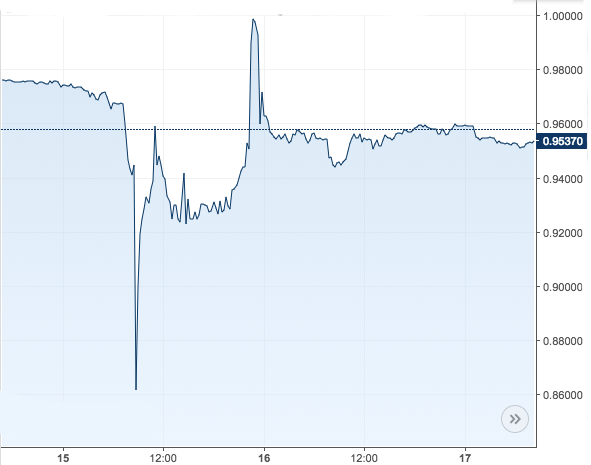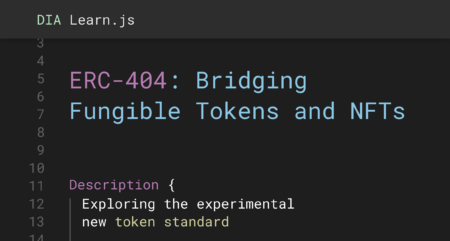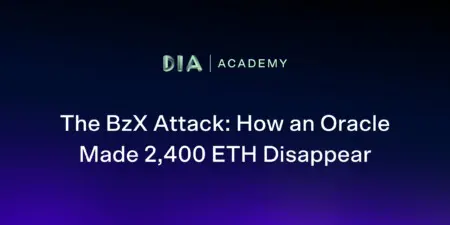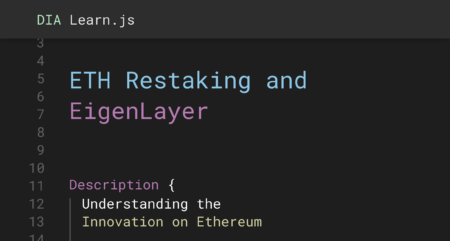Can we trust crypto data?
Tether’s recent price decline reveals why we need validated, open-source data on crypto assets.

Two days ago, Tether (USDT) experienced a sharp price decrease and went down as far as $0.96 on Coinmarketcap while the price of Bitcoin suddenly surged. A price drop in this range would not even make the news with regard to most other cryptocurrencies, however, it is very unusual for the stable coin Tether, which is pegged to the USD and should therefore always be traded closely to $1. We took a closer look at the price decline, which led us to unveil some concerning facts about the methodology behind Coinmarketcap’s data. But first, let’s dive into the topic to understand the recent market movements.
What’s behind the sudden drop in USDT price?
There are numerous factors that may have led to the recent pressure on USDT price. While some claim that the overall interest in USDT is decreasing as competing stable coins such as Gemini Dollar (GUSD) and Maker (MKR) are evolving, the suddenness of the recent price movement can definitely not be explained this way. It is far more likely that rumours about a potential insolvency of Bitfinex, the cryptocurrency exchange closely related to Tether LLC, have led to USDT holders doubting the reliability of the stable coin. Although Tether claims that all USDT are fully backed by US dollars, all reports they so far presented failed to prove this sufficiently.
Why has BTC simultaneously experienced a surge in price?
As uncertainties with regard to Bitfinex and Tether increased, a growing number of investors were trying to sell their USDT as quickly as possible. They did this by trading USDT for BTC because on most exchanges this is the trading pair with the highest volume and thus the fastest trading option. This led to a sudden increased demand that drove BTC price up.
Why was the BTC price increase considerably higher on Bitfinex than on any other exchange?
This could be related to the ties between Bitfinex and Tether LLC, which might have caused investors holding USDT on Bitfinex to become particularly anxious. What’s more, Bitfinex is the exchange with the highest BTC volume by far, so many bots are trading BTC on Bitfinex and may have further reinforced the sharp price increase.
What does the USDT price decline tell us about the trustworthiness of data?
While the USDT was trading around $0.92 on some exchanges such as Kraken, on Coinmarketcap did not fall lower than $0.96 with the exception of two outliers.


This translates to a difference of 4% — a considerable amount for a coin that is supposed to be stable in the first place. And again traces lead to Bitfinex. The exchange does not actually offer USD/USDT trading, however, Coinmarketcap includes Bitfinex in their USD/USDT markets — with a considerable volume. So how is this possible?
Bitfinex claims to exchange all USD transactions for USDT internally and apparently, Coinmarketcap simply takes this statement to be true. The data provider assumes Bitfinex always and instantaneously exchanges all USD for USDT and vice versa. Thus, Coinmarketcap’s USDT price includes all transactions on Bitfinex involving USD, applying a fixed exchange rate of $1. During the recent price drop of USDT the high volume of alleged USD/USDT transaction on Bitfinex — all executed at $1 — kept the price of Tether on Coinmarketcap higher than it actually was.
Coinmarketcap’s methodology is dubious and leads to the question whether the USDT price on their website can be trusted. To calculate the price of USDT/USD Coinmarketcap does not only include the questionable ‘$1 data’ from Bitfinex, but also data from 400 other exchanges, despite the fact that only two of them — Kraken and Bittrex — actually offer real USDT/USD trading. As the volume of USDT/USD transactions on Kraken and Bittrex is very low, they barely affect USDT price on Coinmarketcap, although they offer the most realistic numbers in our view. So while most news sites reported Tether to have fallen to $0.96, according to data on Coinmarketcap, the actual decrease was even more dramatic, as it was trading at $0.92 on Kraken.
There have been a number of data glitches reported on Coinmarketcap and growing skepticism towards the platform’s credibility. Our analysis of the recent USDT price movements clearly confirms the crypto market’s desperate need for standardised, validated open-source data. This is why we are developing DIA — a crowd-driven decentralised financial information platform powered by blockchain. DIA will revolutionise the datasphere by providing trustworthy data, verified by multiple users and based upon transparent methodologies.







